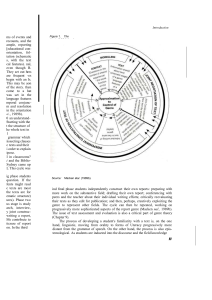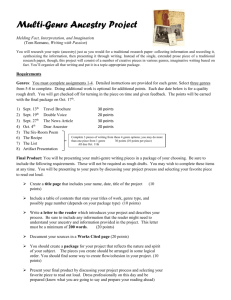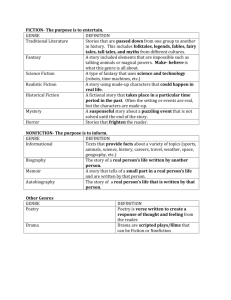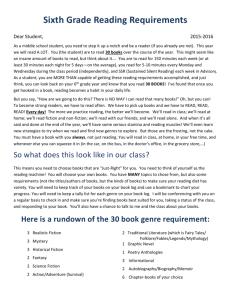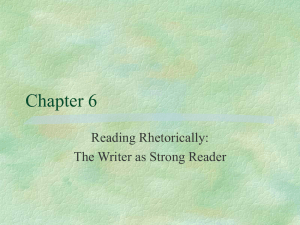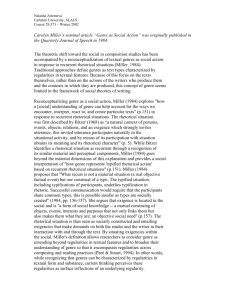GENRE ANALYSIS
advertisement
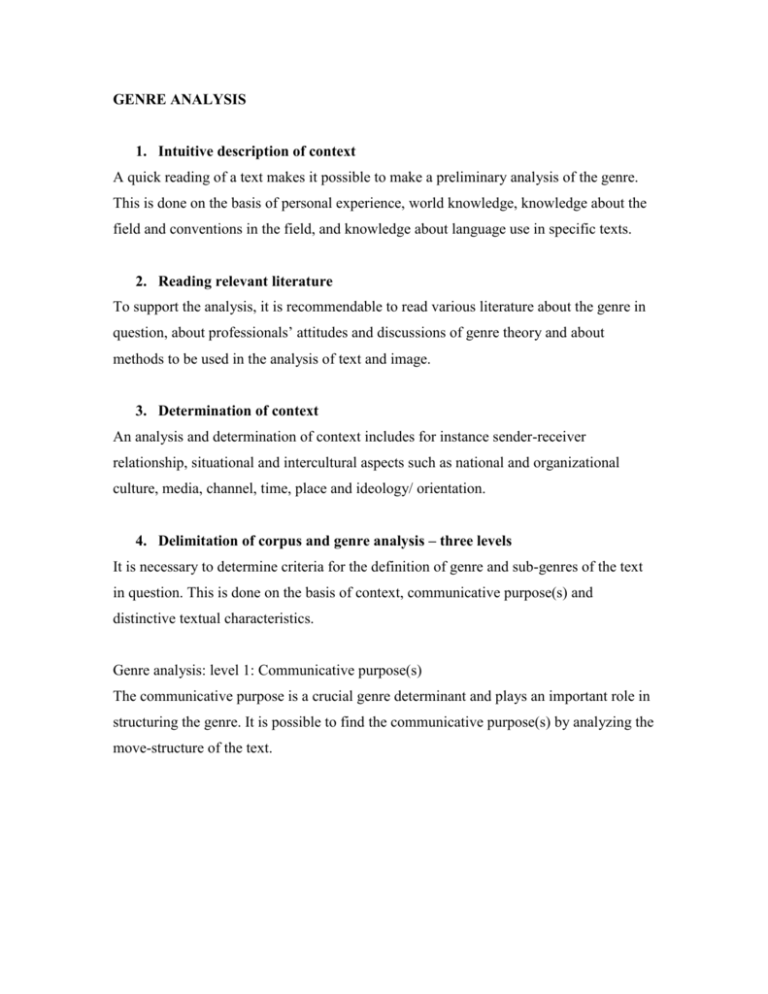
GENRE ANALYSIS 1. Intuitive description of context A quick reading of a text makes it possible to make a preliminary analysis of the genre. This is done on the basis of personal experience, world knowledge, knowledge about the field and conventions in the field, and knowledge about language use in specific texts. 2. Reading relevant literature To support the analysis, it is recommendable to read various literature about the genre in question, about professionals’ attitudes and discussions of genre theory and about methods to be used in the analysis of text and image. 3. Determination of context An analysis and determination of context includes for instance sender-receiver relationship, situational and intercultural aspects such as national and organizational culture, media, channel, time, place and ideology/ orientation. 4. Delimitation of corpus and genre analysis – three levels It is necessary to determine criteria for the definition of genre and sub-genres of the text in question. This is done on the basis of context, communicative purpose(s) and distinctive textual characteristics. Genre analysis: level 1: Communicative purpose(s) The communicative purpose is a crucial genre determinant and plays an important role in structuring the genre. It is possible to find the communicative purpose(s) by analyzing the move-structure of the text. Genre analysis: level 2: Move-structure Authors follow specific conventions when they organize messages and this is what constitutes recognizable genres. When organizing texts as ‘goal-oriented social processes moving through stages’ (Martin 1997), authors produce moves, which may be obligatory or facultative. Genre analysis: level 3: Rhetorical strategies Analysis of the rhetorical and visual strategies used, i.e. the frequency of specific syntactic structures, specific lexical items or specific images serve the purpose of substantiating the intuitive impression received when glancing through a text. Selected examples of rhetorical strategies: - lexis (e.g. scientific vocabulary, Latinate words or terminology characteristic of a particular profession field - connotation - change of code (dialect, sociolect, etc.) - imagery, metaphors, personification, etc. - specific syntactic structures such as ellipsis, repetition, parallelism, etc. - specific syntactic structures such as nominal style, the passive voice, the active voice - specific language functions (description, narration, explanation, argumentation, etc.) - intertextuality (relying on the reader’s awareness of other texts or text-parts). - Interdiscoursivity (embedding or imitation of other text genres). Frandsen, Johansen & Nielsen (1997): International Markedskommunikation I en postmoderne verden. Viborg: Systime Christi & Martin (eds) (1997): Genre and Institutions, Social Processes in the Workplace and School. London and Washington: Cassell.




